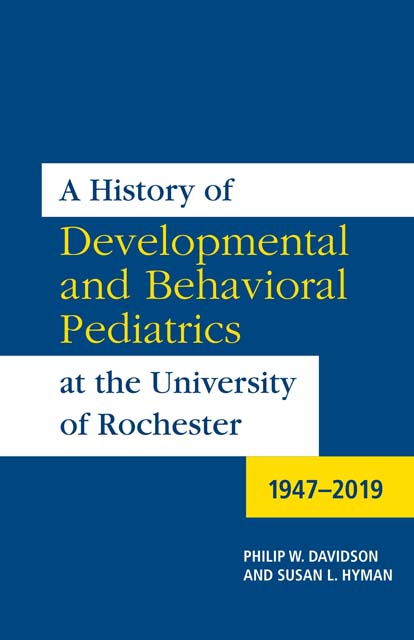Book contents
- Frontmatter
- Dedication
- Contents
- Foreword
- Preface
- Epigraph
- Chapter One Historical Context
- Chapter Two Laying a Foundation
- Chapter Three Opportunities
- Chapter Four Changing of the Guard
- Chapter Five Emergence of Focus
- Chapter Six Team Building
- Chapter Seven Maturation
- Interlude: (Or Let Us Take A Break From Acronyms)
- Chapter Eight Expansion
- Chapter Nine Emergence of Research Programs
- Chapter Ten Change in the Wind
- Chapter Eleven Beyond Dreams
- Chapter Twelve DBP’s Clinical Program Expands
- Chapter Thirteen Dramatic Growth of Autism Research
- Chapter Fourteen Changing Relationships
- Epilogue
- Acknowledgments
- List of Abbreviations
- References
- About the Authors
Chapter One - Historical Context
Published online by Cambridge University Press: 14 June 2023
- Frontmatter
- Dedication
- Contents
- Foreword
- Preface
- Epigraph
- Chapter One Historical Context
- Chapter Two Laying a Foundation
- Chapter Three Opportunities
- Chapter Four Changing of the Guard
- Chapter Five Emergence of Focus
- Chapter Six Team Building
- Chapter Seven Maturation
- Interlude: (Or Let Us Take A Break From Acronyms)
- Chapter Eight Expansion
- Chapter Nine Emergence of Research Programs
- Chapter Ten Change in the Wind
- Chapter Eleven Beyond Dreams
- Chapter Twelve DBP’s Clinical Program Expands
- Chapter Thirteen Dramatic Growth of Autism Research
- Chapter Fourteen Changing Relationships
- Epilogue
- Acknowledgments
- List of Abbreviations
- References
- About the Authors
Summary
… [a] custodial experiment, which was to determine whether the need existed for such an asylum; whether there are in the county poorhouses or elsewhere feeble-minded women who need care and protection to prevent them from multiplying their kind and so increasing the number of the dependent classes in the State; also, could they be maintained without undue cost.
—S.S. Pierson, 1893, from his Historical Address, delivered at the dedication of the New York Custodial Asylum for Feeble-Minded Women, at Newark, N.Y., June 10, 1890People with intellectual and developmental disabilities (IDD) have been a part of our culture and experience for as long as human history has been recorded. As we noted in the Preface, for most of history, mankind managed to marginalize those who were different from the mainstream of society. Many people with IDD during most of the 19th Century and the first half of the 20th Century were placed as children in large residential facilities when their care at home proved difficult for their families (Scheerenberger, 1987). New York State was a leader in developing such residential facilities, which were called State Schools (Stearns, 2011). Although initially well-run and well-funded, by the middle of the 20th Century, State Schools became overcrowded and underfunded. Moreover, because of the lack of community alternatives, placement in a State School guaranteed people would have almost no chance to be reintegrated into society and lead productive lives. Instead, they were vulnerable to poor health and early deaths (Noll & Trent, 2004). No matter how well-run or well-funded the State School System, the concept itself was degrading and abhorrent and its implementation inhumane in the lens of modern history. One early, openly stated objective of the State School network was to reduce the incidence and prevalence of IDD in the general population by application of approaches such as eugenics (Pierson, 1893). Eugenics is the concept that controlled breeding can improve a human population to increase desirable traits. Developed largely by Francis Galton as a method of improving humanity, the concept of eugenics fell into disfavor only after the perversion of its doctrines by the Nazis.
Two residential institutions were in the Finger Lakes region through the late 19th and early 20th Centuries.
- Type
- Chapter
- Information
- A History of Developmental and Behavioral Pediatrics at the University of Rochester1947-2019, pp. 1 - 4Publisher: Boydell & BrewerPrint publication year: 2021



